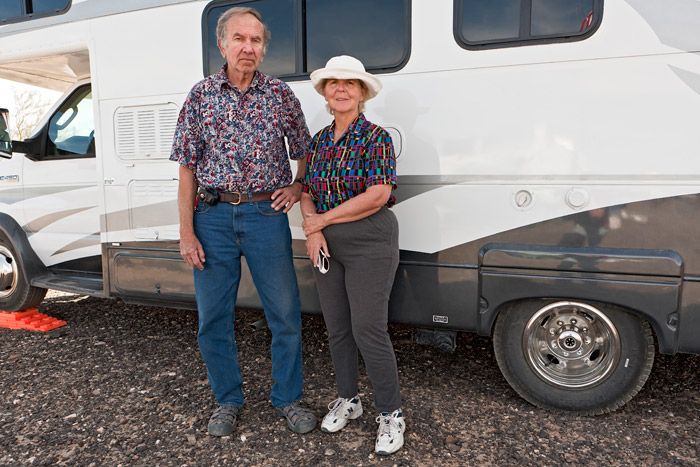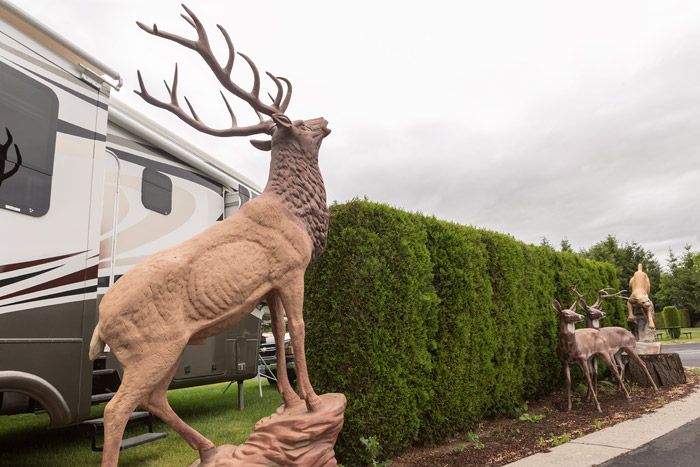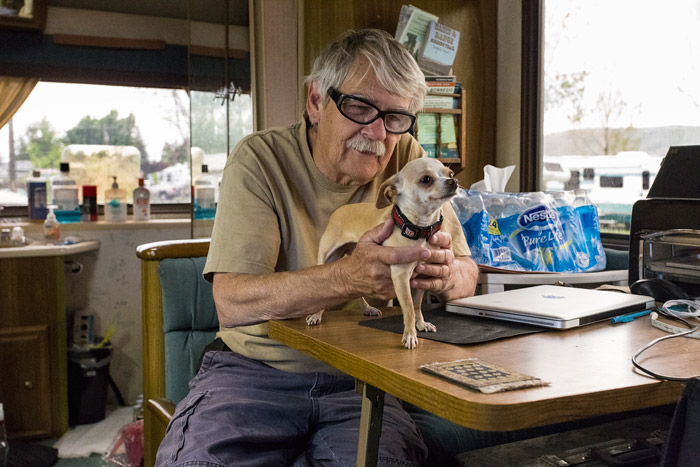blog
Interview with photographer David Gardner
F-Stop Magazine: How did you first become involved in photography and what led to you working in this medium as an artist?
David Gardner: The seeds were planted at a young age but didn’t take root till much later. During a family outing in the Santa Cruz mountains, I got separated and lost in the forest. I was 8. I wandered around for a few hours completely terrorized until I came across a young couple on the trail. To calm me down, they put a camera around my neck and showed me how to use it. They also taught me how to drink from a stream and showed me how to identify various plants around us. I went from utter terror of my surroundings to complete joy, and the joy and curiosity of the natural world, and the desire to picture it has lingered all these years after.
But that desire to photograph was dormant for many years afterward. In my large family, there were always cameras around, but they were toys to us – something to be played with. I would use my Kodak Tri-Chem packs to develop my B & W snapshot negatives in the bathroom – because it was fun. I felt the magic, but the thought of using a camera in pursuit of creative expression never seriously occurred to me until my mid-20’s when I discovered the work of Ansel Adams. Adams led to Edward Weston, but more so his son Brett. Brett led to Minor White, and Imogen and the whole West Coast School. I learned early on that I was more visually oriented than verbal, and I was attracted to the way a photograph could express what I was feeling about the world around me. Photography was the perfect form for me because it was rooted in reality but could be used to express so much more. Unfortunately, I was entangled in a non-photographic life by then.
It remained a serious interest though, and I took classes to learn more at the local community college. This is where I met my friend and mentor Stephen Johnson. He is a master fine art landscape photographer and pioneer of the digital imaging age, whom I’ve now known for more than 35 years. On the first day of class, he stood at the blackboard, drew a rectangle on the board and said, “This is your world and you control everything in it.” I was just so lucky to have found someone I felt so in tune with visually at that point in my life.
While mostly self taught, Stephen has been my guide these many years. He taught me all the technical aspects of picture making, but more importantly, he guided me in how to “see” photographically. I still wanted to go to art school though, and applied at the San Francisco Art Institute. I thought a degree was important. My entrance portfolio reviewer was Jack Fulton. He looked at my work, looked up at me and said, “You don’t need to come here. There’s nothing much more we can teach you”. While that was kind of great to hear, it also discouraged me from wanting to try and work it out. Working at a full time job and attending what few classes I could get at night was not a pleasant experience. I attended for a couple of semesters, then dropped out. I’ve been mostly working it out on my own ever since.
F-Stop: How did the project “Life on Wheels” come about?
DG: Well, I am primarily a landscape photographer. When I stopped working full time in 2006, my wife and I bought a motor home so we could travel the continent to photograph the landscape. While doing this, I began noticing some of those around me in the places we stopped to camp seemed a bit different from what I thought vacationers would be like. They would stay for weeks in one spot, hang around the campground a lot and seemed to know lots of other campers in the area. A large proportion of them seemed to be from either Texas or South Dakota.
Since I was also in camp a lot during the day, I started approaching them to shoot the breeze. We’d talk about general stuff, but eventually I learned they were actually living full time in their recreational vehicles. They’d sold their homes and property and traveled the country. I was shocked as to how many people were doing this. It was not what I expected and assumed about the older generation and what retirement was about. They were lively and had a positive attitude toward life.
I admired that zest for life. Enough so that I felt compelled to photograph them. You have to understand this was a huge leap for me. I don’t photograph people. I have never wanted to photograph people. But each time I walked away from a full timer, I would kick myself because I hadn’t had the nerve to pull out my camera. Eventually I decided I couldn’t call myself a photographer if I didn’t do a project I felt uniquely qualified to do.
So I finally just resolved to try it out. I knew something was there, and would be interesting not just to me, but others as well. I really wasn’t even sure I could photograph people in an interesting way, but I had to try.
F-Stop: Can you discuss your process for making these images or your creative process more generally?
DG: The process for this project is quite different from anything I’ve done before. Initially I decided to travel down to the small desert town of Quartzsite in Arizona. Quartzsite has a year round population of about 3000, but in January and February over 1 million people pass through – all RVer’s. Not all are full-timers of course, but many are. They come primarily for the winter warmth, but it has become sort of the Burning Man of the Geritol set. I refer to it more as “The Gathering of the Tribes.” There are rock and gem shows, swap meets, flea markets, all culminating in a giant RV show at the end of January. The land around Quartzsite is all public Bureau of Land Management property, and people can stay long term for very little money. Out in the middle of nowhere really. I found a group of RV owners who had the same brand as me and asked if I could join the gathering.
I started by identifying prospective subjects. Then I approach them, initially just to talk. I work the conversation around to whether they are full-timers, let them know I am working on a photography project about the lifestyle, and eventually ask if I can include them. I’ve only been turned down once.
I have found the more time I can spend with them, the better my images are. I started by doing the whole process in an hour or two. Now I often spend multiple days between visiting and photographing. Sometimes I actually travel with them from place to place. As their guard lowers, they tend to open up and reveal more. I am completely honest with what I am trying to convey and I think it comes across. Sometimes we meet only in passing and I can only spend a few minutes.
I wanted this project to be mostly about the people, but it also seemed important to include their rigs and the landscape they occupy. I think of it as a sort of environmental portrait project of all of those aspects. So I wanted portraits of the people, both outside and inside their RV’s, and images of them living the life, and I wanted portraits of the rigs in the environment.
F-Stop: How do you choose what or who to photograph, what are you looking to capture?
DG: Since I travel 4-6 months per year in my own motor home, I had a pretty good idea of what I needed to include in the project. I started by just photographing any full-timer I could find. Eventually, as the project became a little better defined in my head, I began refining what I wanted. I look for people and situations that best represent the lifestyle – grooming habits, how they connect personally and online, etc. Interesting personal stories can lead to more intimate pictures, and unusual or quirky characters – no shortage there – also add a nice touch. I also look for dramatic environmental lighting for the “rigs in the landscape” images.
F-Stop: What are some of the things you have learned about the people you have met and/or this lifestyle they have chosen?
DG: They’ve actually really opened my eyes as to the vitality of what I’ve always considered the “Older Generation”. They are not content to live out their lives in one place. They want to engage with new people and places all over the country, and they do this by embracing the newest technologies in their rigs. Solar panels give them the ability to exist off the grid and meet in remote locations. That’s where I find many of them. WiFi and Skype enable them to surf the web and stay in more intimate contact with one another.
The whole nature of home and family has changed for them. It used to be, kids could rely on their parents being a safe haven for home visits or babysitting – a sense of home base. Now the parents are traveling and the kids don’t like it. They want their parents close!
The rigs themselves would seem to be gas guzzlers – and they are – but full-timers aren’t driving all the time. They stay put for weeks or months. They are using solar panels for power, composting toilets for waste, and because one can only carry so much fresh water, they are natural conservers. The carbon footprint of the typical RVer is much smaller than any stick and brick home. Oh yes, the reason they often seem to be from Texas and South Dakota is because there is no vehicle registration fee in those states so full-timers save hundreds by registering there.
I’ve also had a personal realization over the course of this project. I’ve come to understand my own trepidation toward aging. About 2 years into the project, I remembered a conversations I had in my 20’s at a bar over multiple drinks. The question was posed, What age will you be when you start to be old? I said 60. Next month I turn 60. I realized I’d been worried about becoming old and what I thought that meant. The thing is, I don’t feel the way I thought I would back then, and neither do any of the people I’ve been photographing. This project has been a great way for me to work through my own silly notions.
F-Stop: What do you want people to experience or think about when they look at these photographs?
DG: I think many of the things I spoke to in the earlier questions, but also to give people an inside glimpse of this lifestyle. I think it’s also important to adjust our view of how baby boomers are still forging new territory in retirement.
F-Stop: Do you have a favorite image in the series? If so, which one and why is it the image that stands out to you most?
DG: Each time I come back from a photo trip I come back with new favorites, so it changes a lot. But some are Roger Catches up on Facebook, Debbie with Rupert and Elliot, Jolly with his Fighting Knife. I also like a lot End of Day, Valley of Fire and Evening Gathering. Those images really embody a sense of the people and the experience of being out there for me.
F-Stop: Are you working on any other projects currently?
DG: I have a couple of ongoing projects at the moment. I am stepping back a bit to some landscape roots for a series called Sandscape – abstract sand dune work. Not sure how commercial it will ever be, but this kind of work for me is so satisfying. Also a new project I’m tentatively calling Western Myths. I haven’t completely wrapped my head around it yet – just making pictures as I travel in the west at this point. I hope that it will speak to the perceptions of the west as opposed to the realities that I experience as I travel.
F-Stop: What photographers or other artists inspire you?
DG: I mentioned earlier those who brought me to photography, Ansel, Edward, Brett and the like, but as my photographic interest in the landscape has evolved, I find my influences have also. Robert Adams and Stephen Shore became important to me, and now I look to Richard Misrach and photographers like Terry Falke and Lisa Robinson for how landscape should be approached. And of course my friend Stephen Johnson.
To see more of David Gardner’s work: lightight.com
Location: Online Type: Featured Photographer, Interview
One response to “Interview with photographer David Gardner”
Leave a Reply
Events by Location
Post Categories
Tags
- Abstract
- Alternative process
- Architecture
- Artist Talk
- artistic residency
- Biennial
- Black and White
- Book Fair
- Car culture
- Charity
- Childhood
- Children
- Cities
- Collaboration
- Community
- Cyanotype
- Documentary
- Environment
- Event
- Exhibition
- Faith
- Family
- Fashion
- Festival
- Film Review
- Food
- Friendship
- FStop20th
- Gender
- Gun Culture
- Habitat
- Hom
- home
- journal
- Landscapes
- Lecture
- Love
- Masculinity
- Mental Health
- Migration
- Museums
- Music
- Nature
- Night
- nuclear
- p
- photographic residency
- Photomontage
- Plants
- Podcast
- Portraits
- Prairies
- Religion
- River
- Still Life
- Street Photography
- Tourism
- UFO
- Water
- Zine





[…] David Gardner is a landscape photographer who spends part of the year travelling around North America in a motor home capturing the world in front of him. For more background see the 2014 F-Stop interview with Gardner here http://www.fstopmagazine.com/blog/2014/08/interview-with-photographer-david-gardner […]